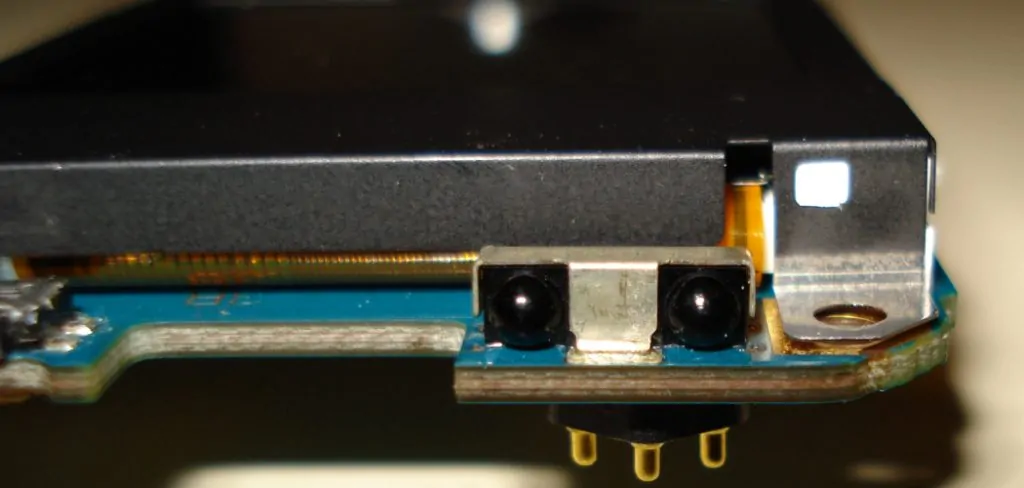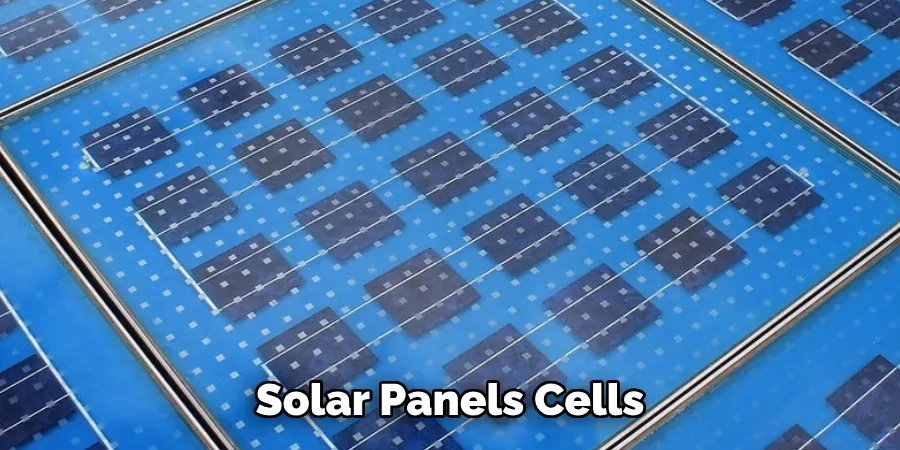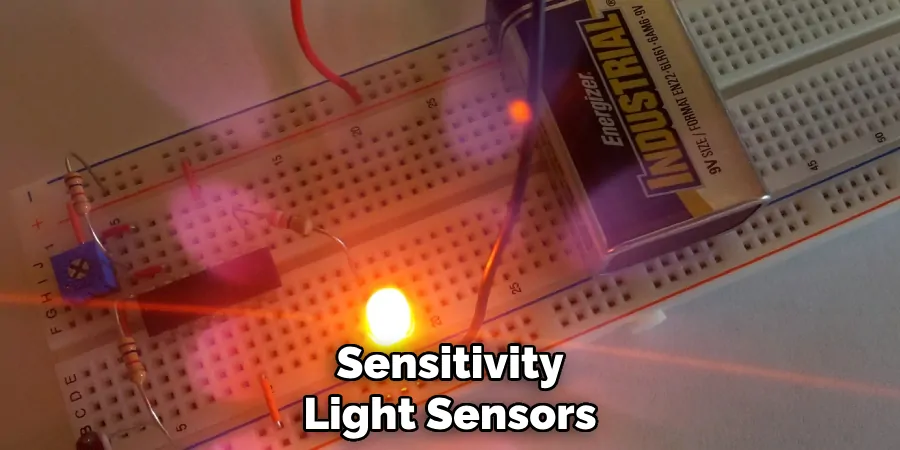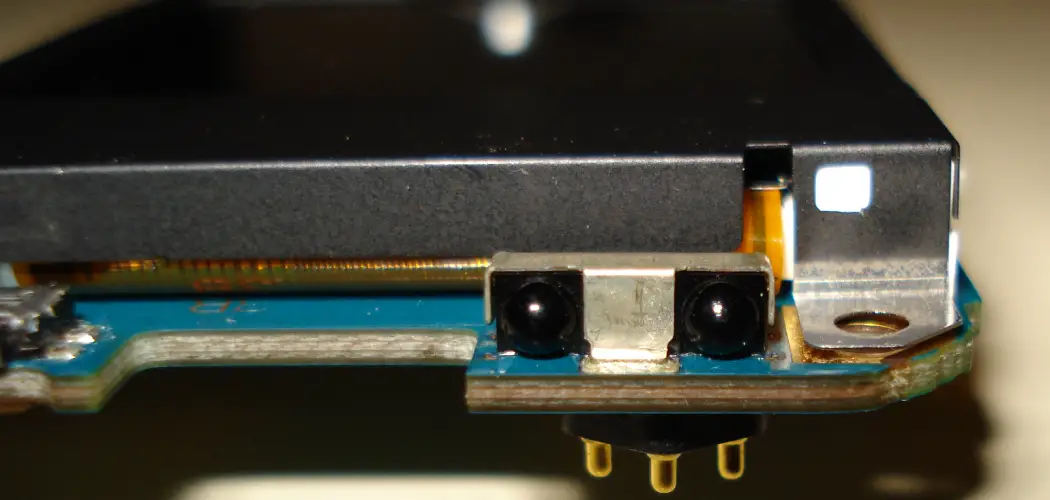Light sensors are versatile components that play a crucial role in various devices and applications by detecting and responding to changes in light levels. These sensors work by converting light energy into electrical signals, which can then be measured and analyzed.
They are commonly used in everyday technology, such as smartphones, which adjust screen brightness based on ambient light, and in automatic lighting systems, which activate at dusk. Understanding the working principles of light sensors can provide insight into their applications and how they improve efficiency and functionality in technological devices. In this blog post on how does a light sensor work, we will explore the basic principles behind light sensors and their applications.

Basic Principles of Light Sensing
At the heart of light sensing is the photoelectric effect, where light energy is converted into electrical energy. Light sensors typically contain a photodetector, such as a photodiode or phototransistor, which is sensitive to various wavelengths of light. When photons strike the photodetector, they release electrons, creating an electrical current proportional to the light intensity.
This current is then processed by the sensor’s circuitry to provide a measurable output. The sensitivity and spectral response of a light sensor can be fine-tuned for specific applications, allowing for precise control in devices ranging from dimmable lighting to advanced optical systems. Understanding these principles is key to utilizing light sensors effectively across diverse technological fields.
7 Steps on How Does a Light Sensor Work
Step 1: Types of Light Sensors
Understanding the different types of light sensors is essential for selecting the right sensor for a specific application. There are several types of light sensors, each designed to detect light in unique ways. Common types include:

Photodiodes:
These are semiconductor devices that convert light into an electrical current. They are known for their fast response time and are widely used in light detection and ranging (LiDAR) systems.
Phototransistors:
Similar to photodiodes, phototransistors offer higher sensitivity and gain. They are often used in light-sensing applications where more amplification is needed.
Photoresistors:
Also known as light-dependent resistors (LDRs), these sensors change resistance based on light intensity. They are typically used in simple applications like streetlights and garden lights that need to react to light changes.
Photovoltaic Cells:
Commonly found in solar panels, these cells convert light energy directly into electrical voltage. They are ideal for applications where light energy needs to be harnessed for power.
By recognizing these types, developers and engineers can choose the appropriate sensor to meet the demands of their project, ensuring optimal performance and efficiency.

Step 2: Material Selection
Choosing the right materials is a critical step in designing an effective light sensor. The materials used in a light sensor greatly influence its sensitivity, response time, and overall functionality.
For instance, silicon is commonly chosen for photodiodes and phototransistors due to its excellent light absorption properties and cost-effectiveness. In contrast, compound semiconductors like gallium arsenide (GaAs) may be preferred in applications requiring the detection of specific light wavelengths, such as infrared.
The selection of materials also depends on the environmental conditions in which the sensor will operate. For example, sensors exposed to extreme temperatures or humidity may require materials with robust thermal and moisture resistance. By carefully selecting materials, engineers can ensure that the light sensor performs efficiently under various conditions, catering to the specific needs of the application.
Step 3: Operating Principle
The operating principle of a light sensor depends on the type of photodetector used. As mentioned earlier, photodiodes and phototransistors convert light into electrical current, while photoresistors change resistance based on light intensity.
Photovoltaic cells, on the other hand, produce electric voltage when exposed to light. Understanding the operating principle of each sensor type is crucial in determining its capabilities and limitations for specific applications.

Step 4: Spectral Response
The spectral response of a light sensor refers to how sensitive the sensor is to different wavelengths of light. This characteristic is essential for tailoring the sensor to specific applications that require the detection of particular light ranges, such as ultraviolet, visible, or infrared light. For example, sensors used in agricultural applications may need a spectral response tuned to detect specific wavelengths that correspond to plant health indicators.
Designing a sensor with the appropriate spectral response involves selecting suitable materials and configuring the photodetector to respond optimally to the targeted light spectrum. Certain materials, like silicon, have a broad spectral response, while others, like indium gallium arsenide (InGaAs), are responsive to the infrared spectrum. By understanding and adjusting the spectral response, engineers can enhance the precision and effectiveness of a light sensor in its intended application, ensuring accurate measurement and control across diverse fields.
Step 5: Sensitivity
Sensitivity is a crucial parameter in light sensors as it dictates the smallest amount of light that a sensor can detect. This property is vital for applications that require precise detection and measurement, such as medical devices or optical instruments. To improve sensitivity, engineers can use materials with high absorption coefficients or incorporate amplifiers in the sensor’s circuitry. In some cases, using multiple sensors in an array can also increase sensitivity and precision.
The sensitivity of a light sensor can also be affected by external factors like temperature and humidity. Careful consideration of these factors is necessary to ensure consistent and accurate readings from the sensor.

Step 6: Response Time
The response time of a light sensor refers to how quickly it reacts to changes in light intensity. Faster response times are typically desirable for high-speed applications like barcode scanners, while slower response times may be suitable for applications where a gradual change in light is expected.
Factors like materials, temperature, and circuit design can all influence a sensor’s response time. By understanding these factors and optimizing the sensor’s components, engineers can tailor the response time to meet the specific requirements of an application.
Step 7: Noise
Noise refers to unwanted signals that can interfere with a light sensor’s output. Reducing noise is critical for accurate measurements and reliable performance. One way to minimize noise is by using shielding or filters to block external electromagnetic interference.
Additionally, signal processing techniques such as filtering and averaging can also help reduce noise levels. By carefully managing noise, engineers can improve the accuracy and stability of a light sensor’s output.
Following these steps on how does a light sensor work and considering the various factors involved in designing a light sensor can help engineers create high-performing, reliable sensors for a wide range of applications. As technology continues to evolve, so too will our understanding of light sensors, leading to even more innovative and advanced designs in the future.
Additional Tips
- When designing a light sensor, it is essential to consider the ambient light conditions in which the sensor will operate. This includes natural and artificial light sources that may affect the sensor’s performance.
- Understanding the trade-offs between sensitivity, response time, and spectral response is crucial in selecting materials and designing the circuitry for a light sensor.
- Regular calibration of light sensors is necessary to maintain accuracy and account for any aging effects or drifts in performance over time. Overall, choosing the right components and understanding how they work together is key to creating an effective and efficient light sensor.
Frequently Asked Questions
Q: What Are the Different Types of Light Sensors?
A: Some commonly used light sensors include photodiodes, photoresistors, and phototransistors. Others include photovoltaic cells, phototransistors, and CCD (charge-coupled device) sensors.
Q: What Are the Applications of Light Sensors?
A: Light sensors are used in various applications, including automatic lighting systems, weather stations, optical instruments, barcode scanners, medical devices, and agricultural monitoring tools. They are also integral components in smartphones and other electronic devices.
Q: How Do You Choose the Right Light Sensor for Your Application?
A: Selecting the right light sensor for your application depends on several factors such as spectral response, sensitivity, response time, and environmental conditions. Carefully considering these parameters and understanding the operating principle of different types of light sensors will help you choose the most suitable sensor for your specific needs.
Q: Can Light Sensors Be Used in Harsh Environments?
A: Yes, with proper selection of materials and design considerations, light sensors can be used in extreme temperatures and humidity levels. This makes them versatile tools for various industries, including aerospace, automotive, and industrial manufacturing.
Q: How Do I Maintain a Light Sensor?
A: To ensure optimal performance and longevity of a light sensor, it is essential to keep it clean from dust and debris. Regular calibration checks may also be necessary to maintain accuracy. Additionally, storing the sensor in a controlled environment can help prevent damage from external factors like temperature and humidity.
Conclusion
Light sensors are vital components in a wide range of applications, from everyday devices like smartphones and cameras to advanced technologies like self-driving cars and medical equipment. By understanding the various types of light sensors, selecting suitable materials, and optimizing their properties, engineers can design highly efficient sensors tailored to specific application requirements.
With advancements in technology, we can expect further innovations in light sensor design, leading to improved performance and enhanced capabilities in a variety of industries. The future of light sensors is bright, and their impact on our daily lives will only continue to grow. Thanks for reading this article on how does a light sensor work.

